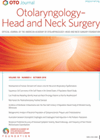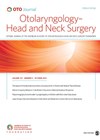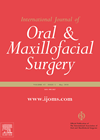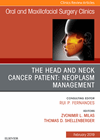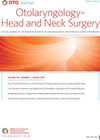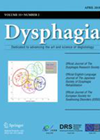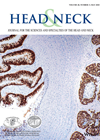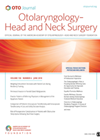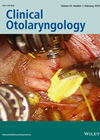
Journal Reviews
Intraoperative identification of primary tumours in unknown primary head and neck cancer using transoral laser microsurgery with frozen sections
The aim of the study was to compare the sensitivity and specificity of intraoperative identification of primary tumours in patients with unknown primary head and neck squamous cell carcinoma (UP HNSCC) using transoral laser microsurgery (TLM) with frozen sections, with...
Elevated prevalence of late-onset dysphagia among head and neck cancer survivors and identifying risk factors
Dysphagia is one of the most common problems affecting head and neck cancer (HNC) survivors. There are few studies investigating late-onset dysphagia post-treatment. The authors set out to investigate the prevalence of dysphagia-related diagnoses and procedures five years’ post-treatment, changes...
Lymph node ratio in tongue cancer
This is an analysis of 88 patients treated in Switzerland between 2003 and 2012. All patients had a selective neck dissection and recurrence occurred in 25 patients. Overall and disease specific survival were 72% and 80%. They specifically looked at...
From a dysphagia clinical trial to a multidisciplinary head and neck clinical pathway – the road to implementation
This paper describes the barriers and facilitators to establishing a structured and coordinated multidisciplinary care pathway for patients with head and neck cancer at a medical centre in the USA. The initiative was set in motion by the roll out...
Perioperative management of the head and neck cancer patient
The perioperative care of patients with head and neck cancer is complex and requires significant preoperative planning and patient education. The issues include analgesia, antibiotics, stoma and wound care, general and chest physiotherapy, thromboprophylaxis and nutrition. This article provides a...
The lateral neck cystic mass – diagnostic dilemma. Can HPV status help?
Solitary cystic masses in the lateral neck can present a significant diagnostic dilemma as they can be metastases from tumours of the oro or nasopharynx. This retrospective paper detailed all patients presenting to a university hospital in Germany, from September...
Prognostic value of neutrophil-to-lymphocyte ratio in HPV-positive oropharyngeal cancer
The authors propose that high neutrophil-to-lymphocyte ratio (NLR) is associated with poor disease-free survival (DFS) in patients with human papillomavirus positive (HPV+) oropharyngeal cancer (OPC). This is a retrospective study that compared the outcomes of 43 patients treated for HPV+...
Grading dysphagia as a toxicity in treating head and neck cancer
Common Terminology Criteria for Adverse Events (CTCAE) is a system used by clinicians to grade the toxicity of oncology treatments in a standardised manner. Dysphagia is perhaps the most common long-term toxicity of head and neck cancer treatment. Currently, a...
Measuring the ‘impact’ of preoperative immunonutrition
Using preoperative nutritional supplements as part of ‘enhanced recovery’ in surgical patients is not a new concept. This interesting paper looks at the latest development in optimising patients undergoing head and neck oncological surgery. Immunonutrition (Nestle’s ‘Oral Impact’ in this...
What is the prognostic value of lymph node yield and density in head and neck cancer?
Neck dissection in addition to surgery of the primary site is commonly recommended in head and neck cancer treatment. However, there has been no consensus on the number of nodes that need to be removed to constitute a sufficient neck...
What to do with incidental findings on FDG PET/CT?
18F-fluoro-deoxy-glucose positron emission tomography/computed tomography (FDG PET/CT) is commonly used in head and neck cancer staging. This investigation frequently identifies incidental findings unrelated to the index head and neck cancer. To assess the nature of these incidental findings, notes of...
Synchronous bilateral tonsil cancer
There is a long-standing debate regarding either unilateral or bilateral tonsillectomy for histological confirmation of tonsil cancer. Bilateral tonsillectomy is the standard of care in Denmark for proven or suspected tonsil carcinoma, and in the diagnostic work-up of the unknown...

